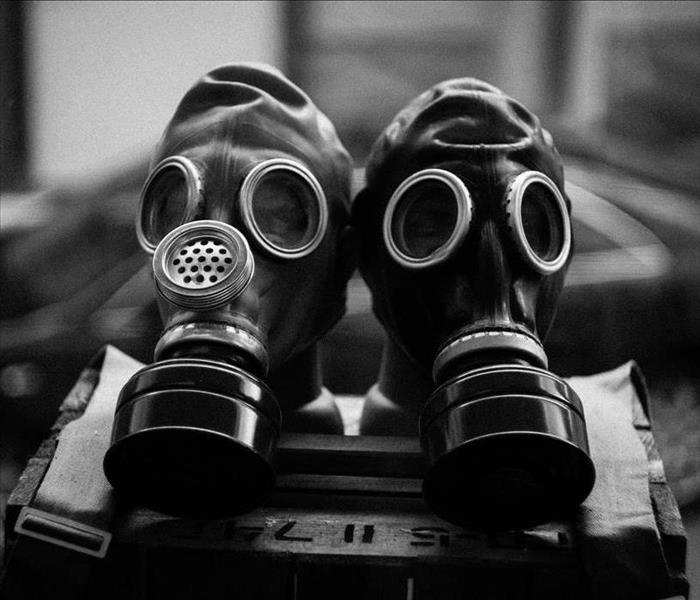Commercial Biohazardous Waste Disposal Guidelines
11/9/2020 (Permalink)
SERVPRO follows the OSHA biohazardous waste disposal guidelines
Due to the extremely harmful nature of biohazard waste, it is essential that professionals, such as those at SERVPRO, dispose of the waste using OSHA biohazardous waste disposal guidelines!
What are the biohazardous waste disposal guidelines?
Biohazardous waste generally means any waste with potentially infectious materials or agents that prove hazardous to health and the environment. Biohazardous waste includes sharp objects, medical waste, animal waste, and microbiological waste. Furthermore, there are four different categories of biohazardous waste, which include:
- Solid waste: these include non-sharp items such as gloves, towels, pipettes, or other materials with biological materials or bodily fluids.
- Liquid waste: these include massive quantities of bodily fluids or blood.
- Sharp waste: these include wastes that can puncture or pierce through the skin and are contaminated, such as needles, syringes, broken glass pieces, etc.
- Pathological waste: these include human tissues, organs, and other parts except for teeth.
Biohazardous waste disposal containers
There are some basic guidelines that you must know when disposing of biohazard waste. The first and most significant thing that needs to be done is by segregating the different types of waste in their respective containers.
- General healthcare waste or non-hazardous material should be kept separate from biohazardous waste. If mixed, all of the waste must be considered hazardous.
- Sharps must be contained in a tamper-proof and puncture-proof container. These may include containers made of high-density plastic or metal.
- Infectious waste must be contained in suitable containers or leak-proof plastic bags.
How to properly dispose of biohazard waste
If the waste is in decay, the date of packaging, required storage conditions, and type must be included in the labeling. A professional will write a clear description of the waste on the labels and include recognizable biohazardous waste symbols. Other vital information to add to the label will consist of the container's weight, the organization's name, where the waste was produced, and the date the container was produced. Properly labeling will comply with all the OSHA rules and regulations.
As a rule of thumb, the container should be only three-quarters (3/4) full. Once the containers are closed, they must be sealed appropriately to avoid any accidental spillage during transportation. Also, ensure that the vehicle being used for transportation does not have any sharp edges or pointy materials in the storage area that can damage the containers.
Additional guidelines to follow when storing biohazardous waste:
- The storage area floor must be easy to clean and disinfect, have a good drainage system, and be impermeable.
- Cleaning equipment, water supply, protective clothing, containers, and water bags must be easily accessible and available.
- The staff and waste-collection vehicles must have easy access to storage.
- It must be well-guarded to prevent any unauthorized personnel from entering.
- Not even birds, animals, or insects must be able to get into the facility.
- Do not expose the containers to direct sunlight.
- There must be adequate lighting and ventilation to avoid health problems or accidents.
- The storage facility must not be near food preparation areas or food stores.
The most common way to treat biohazardous waste will be done by incineration. The sanitary landfill will apply extremely high temperatures to the waste and kill all the organic substances that are potentially hazardous.
Another process to treat biohazardous waste is known as autoclaving. Autoclaving includes sterilizing biomedical waste in a highly pressurized and steam-heated chamber. If the waste consists of plastic, this process can make it pathogen-free!
SERVPRO's approved method for disposal of pathologic biohazardous waste
Collecting, storing, and disposing of biohazard waste while keeping the OSHA guidelines in mind can be pretty challenging for anyone. Therefore, SERVPRO is here to do the job for you. We follow the steps provided by OSHA, which include accumulation, handling, and transportation. If you require cleanup services for the following, we are here for you!
- Blood cleanup
- Vehicle blood and bioremediation
- biohazard remediation and removal
- Homicide and suicide cleanup
There is no reason to put your staff in a risky position when you can hire us to do all the work for you. By hiring us, you are protecting yourself and everyone around you by contacting the SERVPRO of Union, Towns, Fannin & Gilmer Counties professionals. We work quickly and follow all standard biohazardous waste disposal protocols and make your commercial property sterile again!






 24/7 Emergency Service
24/7 Emergency Service
